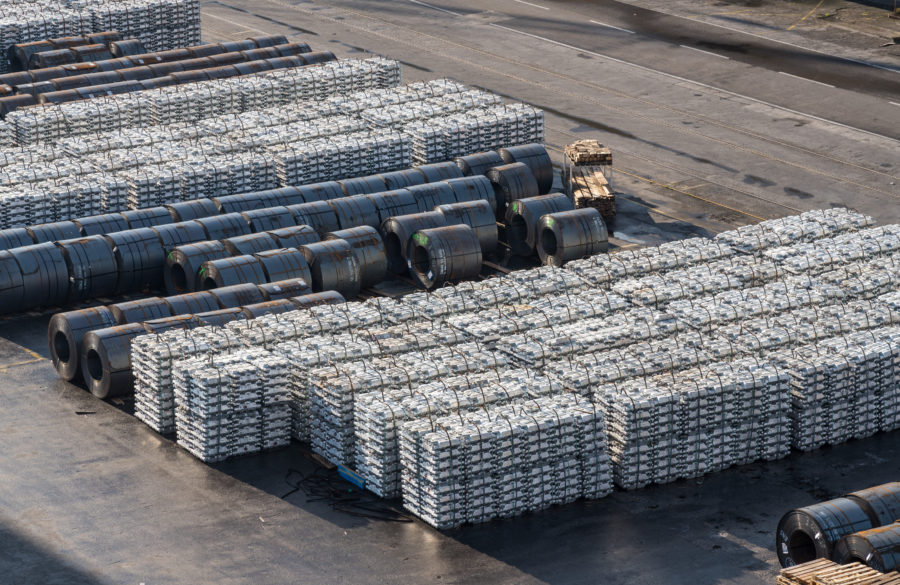Sweden to remove uranium ban

District Metals (TSXV: DMX) and Aura Energy (ASX: AEE) are among companies welcoming Sweden’s steps to remove a ban on uranium mining this year.
The Nordic country’s government under Prime Minister Ulf Kristersson intends to report by May 15 on how it can write new legislation. A 2018 law by the previous government halted uranium exploration and mining projects, sidelining Vancouver-based District’s Viken and Melbourne-based Aura’s Häggån (pronounced HAY-gorn) projects in central Sweden that hold uranium, vanadium and other metals.
District’s Viken deposit, 570 km north of Stockholm, is among the world’s largest deposits of uranium and vanadium based on a 2010 historical resource estimate. It showed 2.8 billion inferred tonnes grading 170 parts per million (ppm) uranium and 2,680 ppm vanadium for 1 billion lb. contained uranium and 16 billion lb. vanadium.
“It is a significant step towards lifting the current uranium mining moratorium,” District CEO Garrett Ainsworth said this week. “The Swedish government has made its intentions clear by stating that ‘the current ban on uranium mining will be removed.’”
While Sweden’s uranium output is minor by global comparisons, its resources account for 27% of Europe’s, according to the country’s geological survey. The heavy metal has more than doubled its price in the past 12 months to $102 per lb. as nuclear power continues its resurgence as a cleaner energy than fossil fuels and major producers such as Kazakhstan, Canada and Niger report supply hiccups.
Uranium wasted
Kristersson’s government, which came to power in September 2022, stated last August it would reverse the uranium mining ban. However, the administration has been occupied trying to stem a surge in gang violence afflicting the country while resisting the anti-immigrant policies of a coalition party it relies on for support. As it stands, the uranium ban requires miners to separate the heavy metal from processing and discard it.
“If the European Union is to become the first climate-neutral continent, access to sustainable metals and minerals must be ensured,” Climate and Environment Minister Romina Pourmokhtari said Friday. “We need to use the uranium we have, instead of sorting it out and considering it as waste.”
Shares in District Metals gained 15% since Friday to 30¢ apiece in Toronto, valuing the company at $32.5 million.
In November, Sweden approved plans to build two large-scale reactors by 2035 and the equivalent of 10 new reactors a decade later. The country depends on nuclear energy for about 40% of its power and said it intends to remove fossil fuels from its grid by 2040.
Project boosted
Uranium is only a minor component of Aura’s Häggån project about 650 km north of Stockholm. But adding uranium lifts the project’s after-tax net present value to as much as $1.6 billion at an 8% discount rate from $1.3 billion at the same rate, Aura said in a 2023 scoping study.
David Talbot, managing director and head of equity research at Red Cloud Securities in Toronto, said Häggån makes up A$48.6 million or 7.1% of its A$679.4 million corporate net asset value estimate.
“We anticipate this to increase should the uranium mining ban be overturned and management demonstrate a reasonable path to production,” Talbot said in a note on Tuesday. “We view the potential uranium mining ban repeal in Sweden as a very positive development and optimistically look forward to the results of the inquiry in May.”
Aura Energy closed 9% higher in Sydney on Tuesday at A$0.24 for a A$135 million market capitalization. The company plans to apply for a 25-year exploitation permit this year. After the ban was invoked, the company filed a compensation claim against the government, but now company managing director and CEO Andrew Grove welcomes Kristersson’s efforts.
“It is the start of a process which I hope will result in new legislation that not only makes it legally possible to mine uranium, but also provides a predictable permit process for uranium extraction alongside the mining of other metals,” Grove said this week. “It makes sense economically and environmentally to make full use of these resources.”
More News
Column: Europe’s future metals strategy hindered by current crisis
Chinese over-capacity and high energy prices have accelerated the long-term decline of European steel and aluminum production.
March 29, 2025 | 02:25 pm
Anglo starts talks with banks on possible De Beers IPO
Anglo is pursuing a dual-track process in its effort to exit De Beers by trying to find a buyer for the struggling business.
March 28, 2025 | 12:19 pm
{{ commodity.name }}
{{ post.title }}
{{ post.excerpt }}
{{ post.date }}



Comments